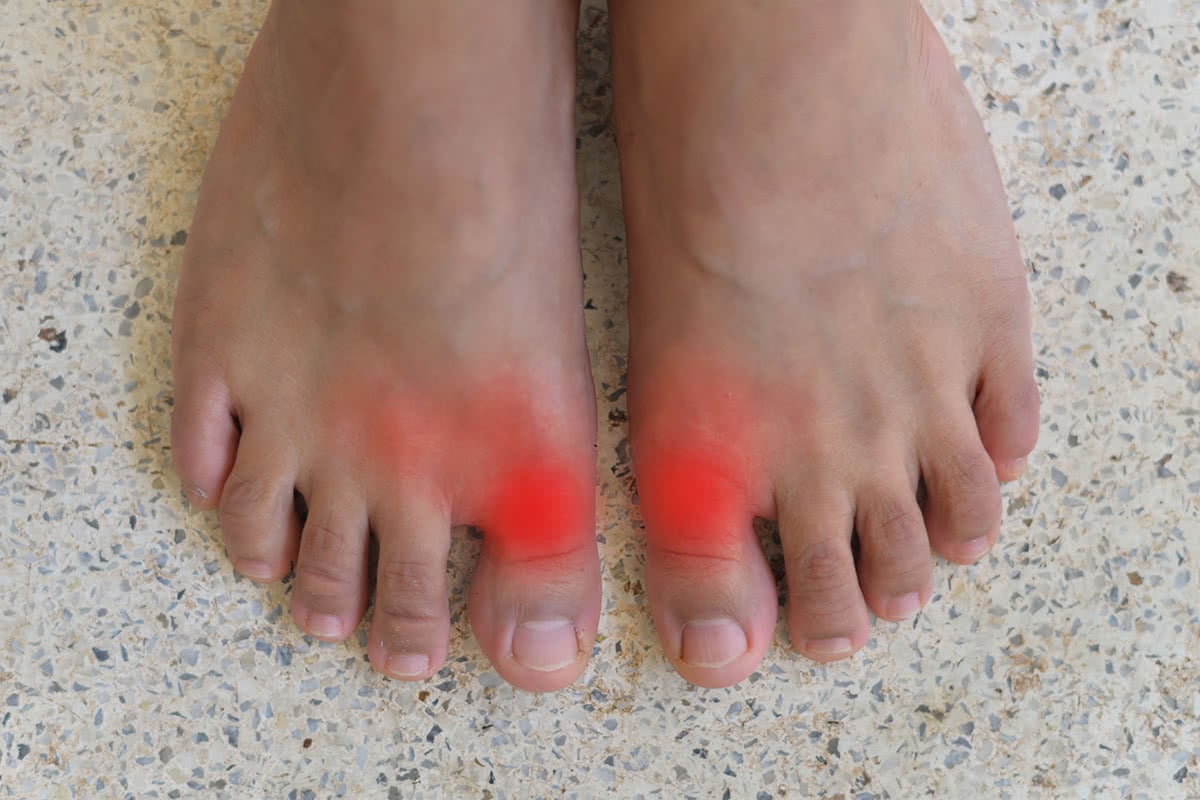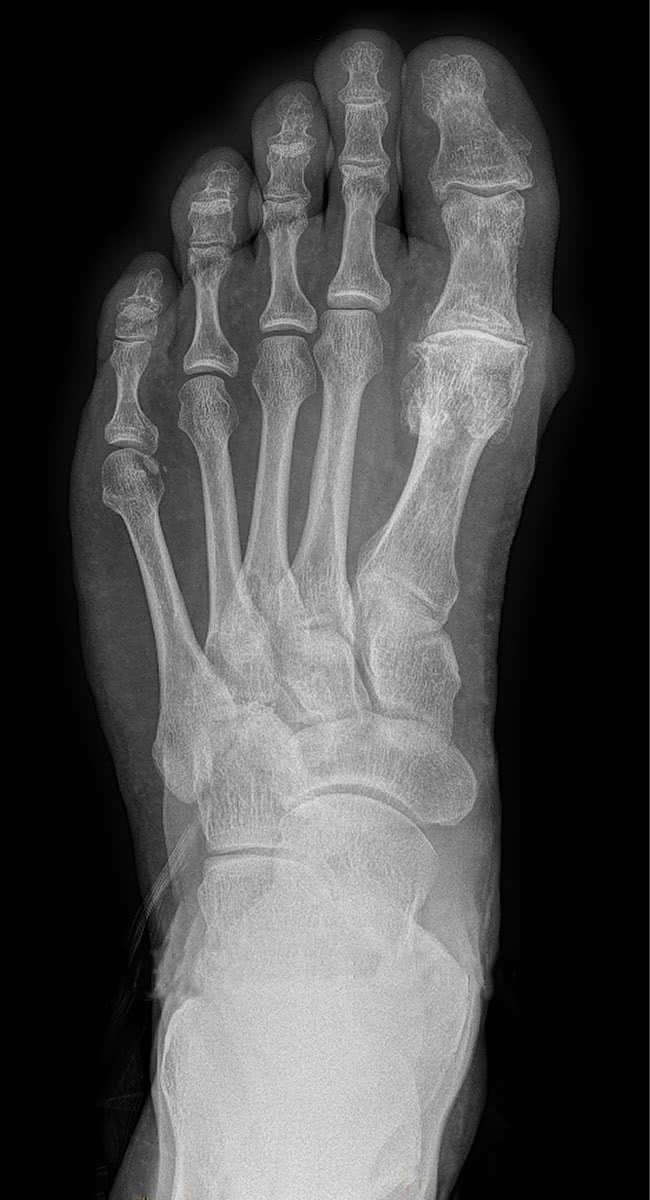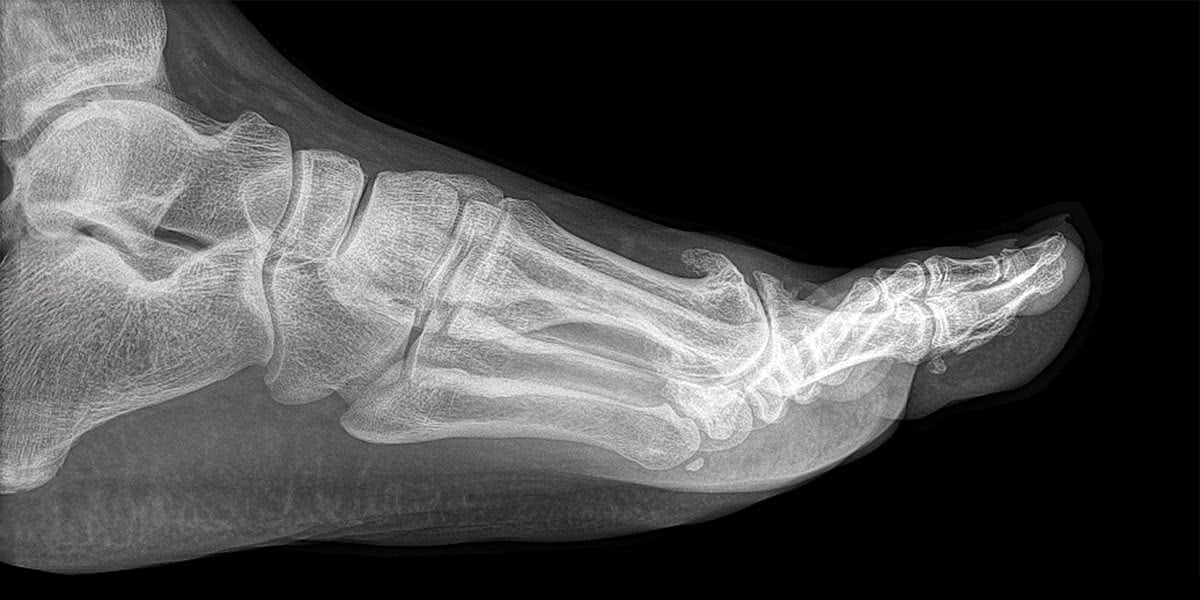Introduction
Also known more colloquially as ‘stiff big toe’ or 'arthritic big toe', Hallux Rigidus affects the joint at the base of the big toe - the metatarsophalangeal (‘MTP’) joint. The big toe is an important part of the anatomy of the foot, and is needed when standing, walking, climbing or stooping down, and so therefore this condition can be very debilitating.
It is a progressive condition and in its early stages is referred to as Hallux Limitus. Although it shares some of the same symptoms as a bunion (including location), it is a different condition and must be treated differently.
The condition is most prevalent in people aged 30-60.



Causes
The direct cause of the condition is the development of arthritis (i.e. degeneration of cartilage tissue) in the affected joint, which can be accompanied by the growth of a bone spur. This may in turn be caused by the following…
- Inherited shape and structure of the foot may predispose some people to the condition.
- Certain activities which, over a long time period, place more stress on the big toe (e.g. people who must frequently stoop down or squat).
- Prior injury to the big toe.
- Rheumatoid arthritis.
- Gout.
Symptoms
As a progressive condition, the symptoms are different in the early and late stages.
Early stage
The main symptom at this stage is pain and stiffness in the big toe when...
- Walking (especially when pushing off when starting to walk).
- Standing.
- Bending.
- The weather is colder.
There may also be some swelling/inflammation in the area and some activities such as running or squatting down may be difficult. A bunion or callus may also develop on the top of the foot.
Late stage
- Pain in the big toe when inactive.
- Problems wearing shoes (due to growth of bone spurs).
- Pain in the hip and / or knee and / or hip (normally a dull type of pain).
- Developing a limp.
Tests / Diagnosis
An early trip to the doctor is advised where any of these symptoms are noticed, as treatment at an early stage is going to allow easier management of the condition, before any bone spurs develop.
A physical examination involves moving the big toe to assess its range of movement followed by an x-ray which will provide information on the level of cartilage degeneration and if any bone spurs are present.
Non-Operative treatment
Various treatments may avoid the need for surgery on an arthritic big toe joint. A podiatrist can often assist with implementation of treatments such as…
- Extra depth, stiff soled, or rocker sole shoes.
- A “Mortons Extension Splint” type of orthotic. This is a carbon fibre plate that extends out to the end of the toe to reduce movement in the joint when walking.
- Simple analgesics such as paracetamol, non-steroidal ant inflammatories, or topical anti-inflammatory gel (Voltaren) can help relieve the pain and allow you to continue with activities.
Related Information
Cheilectomy
Great Toe Fusion
Cartiva Great Toe Arthroplasty
Stiff Big Toe – Hallux Rigidus
